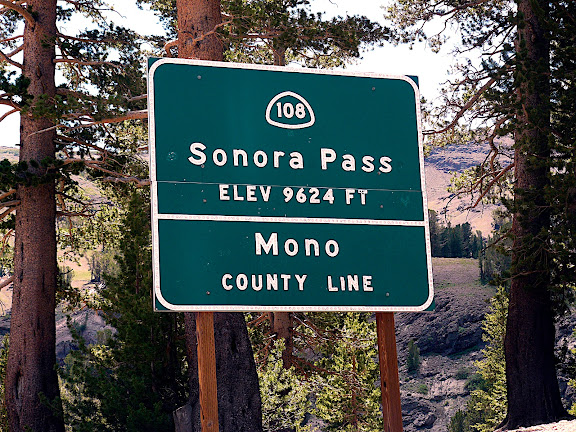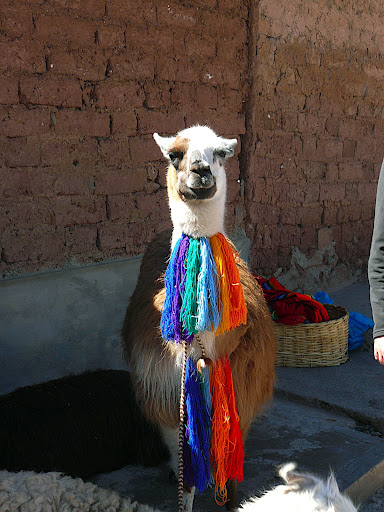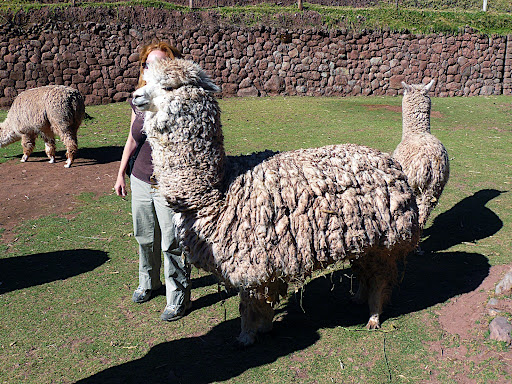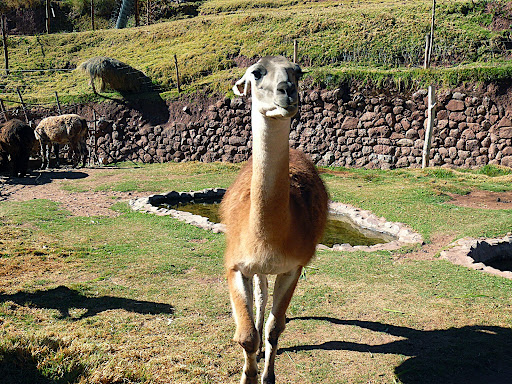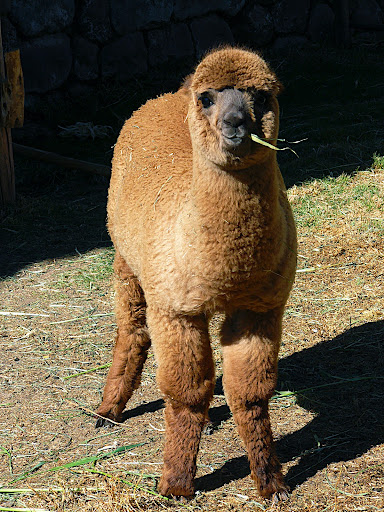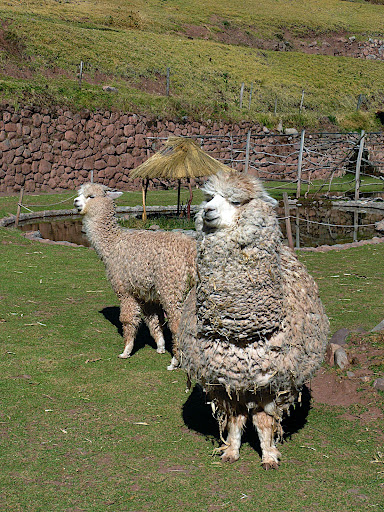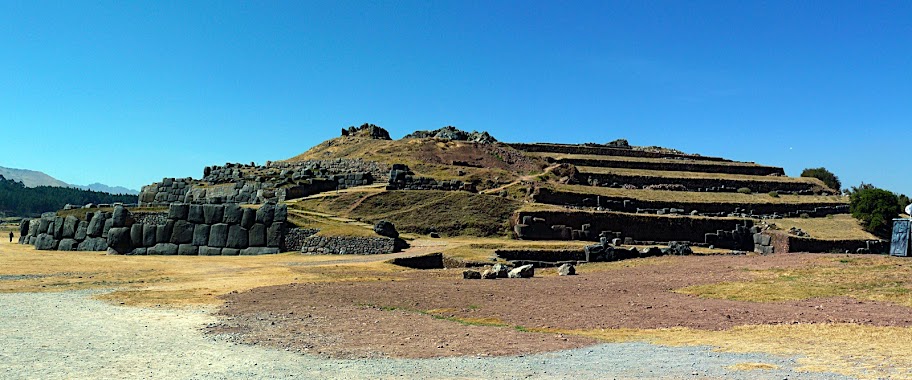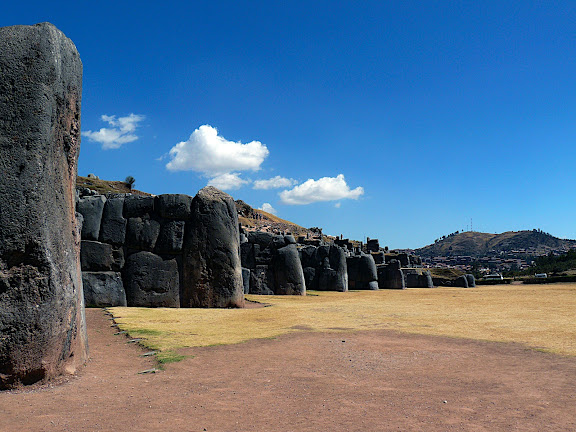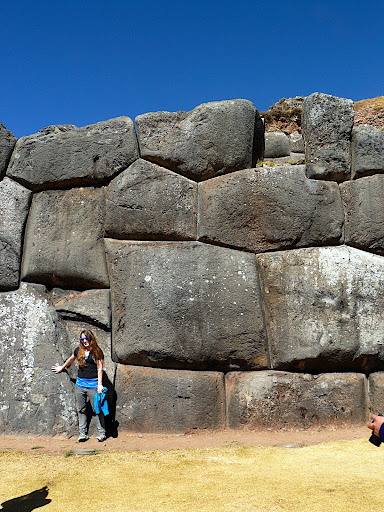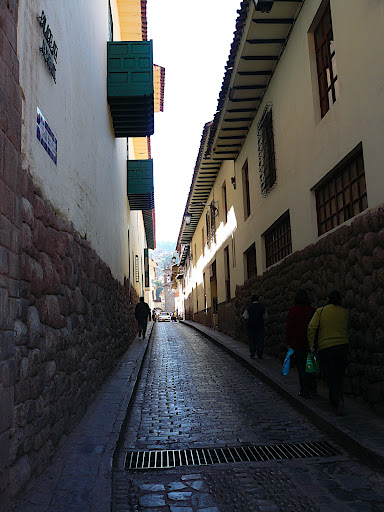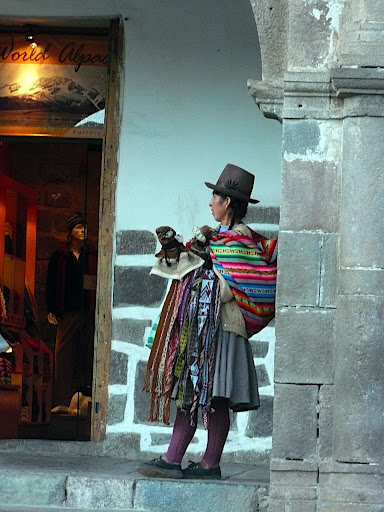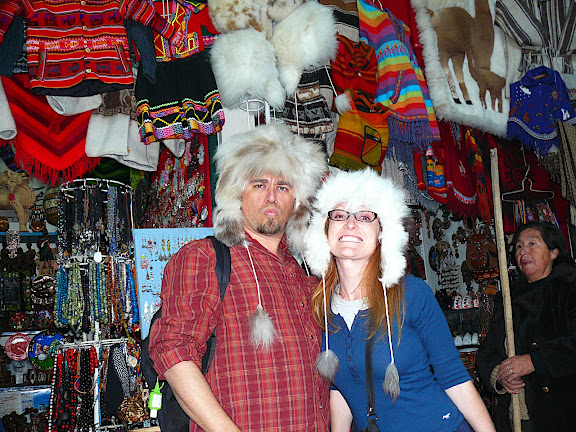
OK, back to Peru and possibly the best vacation day I've had this decade.
The three of us who were weren't either on the Inca treck--or recovering from having been ferried down from it on burros while passing out from altitude sickness--had a leisurely breakfast at 5:30am, and rolled out with the professor-guide and yet another best-driver-in-Cusco in a brand new Hyundai truck that had some kind of radar that lets you overtake other cars right ahead of blind curves.Today’s trip took us over the pass behind Saksaywaman to the Sacred Valley, the center of Incan agriculture and the fortress cities of Pisac and Ollyantaytambo. First stop was a tourist market, which was actually fascinating since we were there hours before the hordes of other tourists whose tours didn’t eschew meaningless amenities like sleep or breaks. So we saw the traders coming in on bicycle rickshaws, or with their children pushing carts with their merchandise.

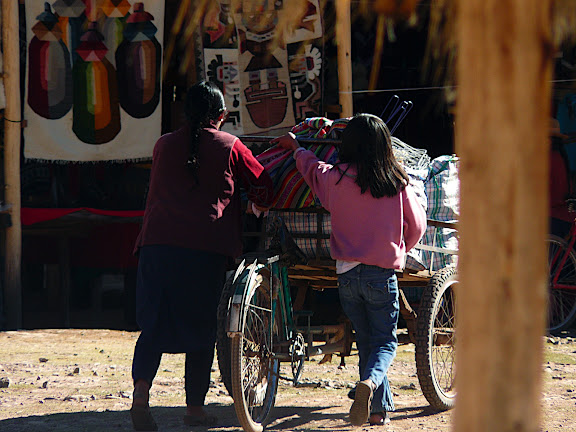 As a side note, even though the rural areas of Peru a desperately poor, we didn’t see any beggars, or any malnourished people. Even the feral dogs in the streets were amazingly well fed. Also, almost every village had its school or schools and some health services--in many cases the best building in town. But it’s still gut wrenching to see farmers plowing with wooden plows and oxen next to a brand new resort hotel or people haggling over a fraction of a dollar. (One more of my “lets strangle the tourists” moments).
As a side note, even though the rural areas of Peru a desperately poor, we didn’t see any beggars, or any malnourished people. Even the feral dogs in the streets were amazingly well fed. Also, almost every village had its school or schools and some health services--in many cases the best building in town. But it’s still gut wrenching to see farmers plowing with wooden plows and oxen next to a brand new resort hotel or people haggling over a fraction of a dollar. (One more of my “lets strangle the tourists” moments). Speaking of which, our next stop, the llama preserve/craft cooperative that set the lone female on the tour into a 45 minute bout of constant cooing, showed the other extreme: amazing handiwork, great designs, but at prices that made my Bay Area accustomed eyes water. Wall hangings for many hundreds or thousands of dollars, baby Alpaca pillows for over $100,.. and so on. Very interesting, but they’d probably make ten times the money if their customers wouldn’t just kneel over from sticker shock. Somehow, in every developing country I've been in, there are these few places where the prices are not only completely out of whack with the local economy--which is basically every store that caters to tourists, even if it's still cheap--but where the pricing is even out of alignment with what 99% of the tourists can afford, are willing to spend, or would have to pay if the same merchandise would be sold at a fancy boutique on 5th Avenue. Most of us don't go to Peru expecting to spend the price of a new car for a 3 foot square carpet.
Speaking of which, our next stop, the llama preserve/craft cooperative that set the lone female on the tour into a 45 minute bout of constant cooing, showed the other extreme: amazing handiwork, great designs, but at prices that made my Bay Area accustomed eyes water. Wall hangings for many hundreds or thousands of dollars, baby Alpaca pillows for over $100,.. and so on. Very interesting, but they’d probably make ten times the money if their customers wouldn’t just kneel over from sticker shock. Somehow, in every developing country I've been in, there are these few places where the prices are not only completely out of whack with the local economy--which is basically every store that caters to tourists, even if it's still cheap--but where the pricing is even out of alignment with what 99% of the tourists can afford, are willing to spend, or would have to pay if the same merchandise would be sold at a fancy boutique on 5th Avenue. Most of us don't go to Peru expecting to spend the price of a new car for a 3 foot square carpet.Next stop Pisac, probably the most fascinating Inca town on the entire trip (I’m looking at you Machu Picchu).
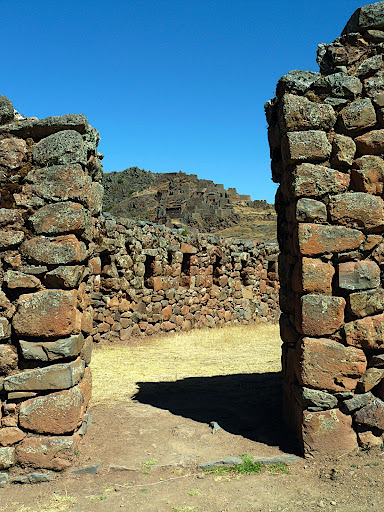 It sits high on a ridge over the river and the new town
It sits high on a ridge over the river and the new town 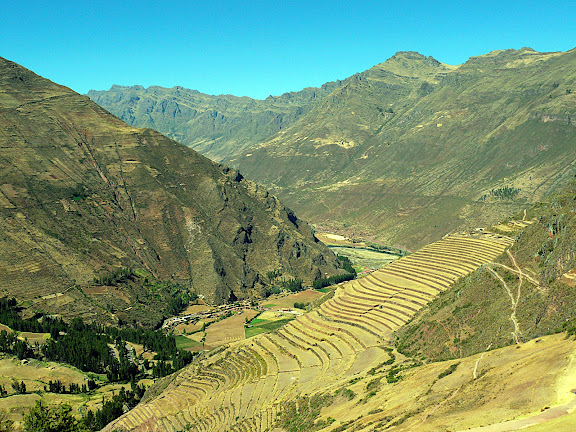 and unlike MP and Ollyantaytambo, you can see the signs that people actually lived there for hundreds of years like groves worn into the stones from people walking over them, buildings from different eras, rich houses, poor houses, barracks and so on. Unfortunately, we only spent a few hours here. Fortunately, the next stop was an empanada stand
and unlike MP and Ollyantaytambo, you can see the signs that people actually lived there for hundreds of years like groves worn into the stones from people walking over them, buildings from different eras, rich houses, poor houses, barracks and so on. Unfortunately, we only spent a few hours here. Fortunately, the next stop was an empanada stand and the crafts market in Pisac. Here prices were 1/40th of the shop we went to in the morning, and the things way more authentic. I bought some nice silver pendants, and--the coolest thing ever--tiny handmade beads formed and painted like gaudy human skulls at 3 cents each. Voodoo bracelet, here I come.
and the crafts market in Pisac. Here prices were 1/40th of the shop we went to in the morning, and the things way more authentic. I bought some nice silver pendants, and--the coolest thing ever--tiny handmade beads formed and painted like gaudy human skulls at 3 cents each. Voodoo bracelet, here I come.After a long drive through the agricultural heartland, we arrived at Ollyantaytambo, the last--and unfinished--mayor Inca town that guards the entrance to to valley from the jungle and the Machu Picchu area. Unlike Pisac, it really is unfinished to the point where some of the gigantic stoned are still left of the ramps leading up to the their intended position. On the bright side, it’s also the only place where the Inca beat the Spanish--at least until they came back with reinforcements. The town underneath it turned out to be the only remaining largely unchanged Inca-designed town in Peru and a fascinating place for exploration on the next day, but the vibe that night was a bit dicy. Maybe just because I was totally wiped from the drive and the walking up-and-down mountains thing, or it was that the guide told the two girl joining back up with us in the hotel after one collapsed on the Inca trail.
It’s also here that I had the once a trip OMG WTF moment when I watched the aforementioned ox plow--ironically Ollyantaytambo is also the most overpriced town in Peru thanks to the isolation and the tourists. It even beat Aguas Caliente, the jump off point to Machu Picchu where some overbuilding and competition has driven the prices down to a more palatable level. Dinner at the hotel was the most expensive meal of the trip and it wasn’t even that good. But I got the picture of this hummingbird outside my room, so all is good.

 On the way to 9628ft...
On the way to 9628ft... ...or 9624ft high
...or 9624ft high 